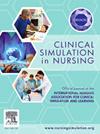映射影响:基于模拟的护理教育顶级出版物的引文分析
IF 2.5
3区 医学
Q1 NURSING
引用次数: 0
摘要
背景模拟学习(SBL)已成为护理教育的一种变革方法,为理论知识与实践技能之间的桥梁提供了创新的解决方案。引文分析确定了影响这一不断发展的领域的极具影响力的出版物。目的与方法本研究分析了从爱思唯尔的Scopus数据库中检索到的50篇被引次数最多的基于模拟的护理教育论文。文章根据引用次数进行排名,并提取关键数据,包括引用密度、出版年份、作者、贡献国家和研究主题。结果分析显示,2010年至2020年间发表的论文最多,2014年至2020年的贡献达到高峰。在英国、澳大利亚和韩国的大力支持下,美国带头作出了贡献。主要主题包括高保真度培训、虚拟仿真和汇报,新兴领域关注人工智能和成本分析。这篇引文强调了在护理教育中推动SBL的有影响力的工作,强调了Q1期刊的主导地位,并指出了差距,例如模拟对临床结果的长期影响。结论本研究结果为今后护理教育的研究和实践提供了指导。本文章由计算机程序翻译,如有差异,请以英文原文为准。
Mapping the impact: A citation analysis of top publications in simulation-based nursing education
Background
Simulation-Based Learning (SBL) has emerged as a transformative approach in nursing education, providing innovative solutions to bridge theoretical knowledge with practical skills. Citation analysis identifies highly influential publications that shape this evolving field.
Aim and methods
This study analyzed the 50 most cited publications in simulation-based nursing education, retrieved from Elsevier's Scopus database. Articles were ranked by citation counts, and key data, including citation density, publication year, authorship, contributing countries, and study topics, were extracted.
Results
The analysis revealed that most articles were published between 2010 and 2020, with peak contributions in 2014 and 2020. The United States led contributions, supported by significant inputs from the United Kingdom, Australia, and South Korea. Predominant themes included high-fidelity training, virtual simulation, and debriefing, with emerging areas focusing on artificial intelligence and cost-analysis.
Discussion
This citation highlights the influential work driving SBL in nursing education, emphasizes the dominance of Q1 journals, and identifies gaps, such as the long-term impact of simulation on clinical outcomes.
Conclusion
These findings provide a roadmap for future research and practice in nursing education.
求助全文
通过发布文献求助,成功后即可免费获取论文全文。
去求助
来源期刊

Clinical Simulation in Nursing
NURSING-
CiteScore
5.50
自引率
15.40%
发文量
107
期刊介绍:
Clinical Simulation in Nursing is an international, peer reviewed journal published online monthly. Clinical Simulation in Nursing is the official journal of the International Nursing Association for Clinical Simulation & Learning (INACSL) and reflects its mission to advance the science of healthcare simulation.
We will review and accept articles from other health provider disciplines, if they are determined to be of interest to our readership. The journal accepts manuscripts meeting one or more of the following criteria:
Research articles and literature reviews (e.g. systematic, scoping, umbrella, integrative, etc.) about simulation
Innovative teaching/learning strategies using simulation
Articles updating guidelines, regulations, and legislative policies that impact simulation
Leadership for simulation
Simulation operations
Clinical and academic uses of simulation.
 求助内容:
求助内容: 应助结果提醒方式:
应助结果提醒方式:


